So, what’s the latest buzz in the gardening world? Bee gardens! That’s right. If you’re wondering why plant a bee garden, there’s a simple answer—bees are to be thanked for 1 in 3 bites of the food we eat.
Bees help pollinate flowers and provide a rich harvest of fruits and vegetables. Besides, it’s a joy to watch them buzz happily about their business.
But because of the shrinking wilderness and growing concrete jungles, their numbers are declining. So it’s high time we start helping the helpers.

Whether you have a large backyard or a tiny balcony garden, there are plenty of ways by which you can help your local bees.
Plant a bee garden, grow bee-friendly flowers, and say no to pesticides—the busy bees will pause to thank you.
So, are you ready to bee-u-tify your garden? Read on to learn how you can plant a proper bee garden, see which plants to grow, and check out some awesome ideas for your own garden.
What Is a Bee-friendly Garden?
A bee-friendly garden is one which is often frequented by bees. But that’s not all. It’s welcoming, rich in pollen and nectar, and chemical-free.
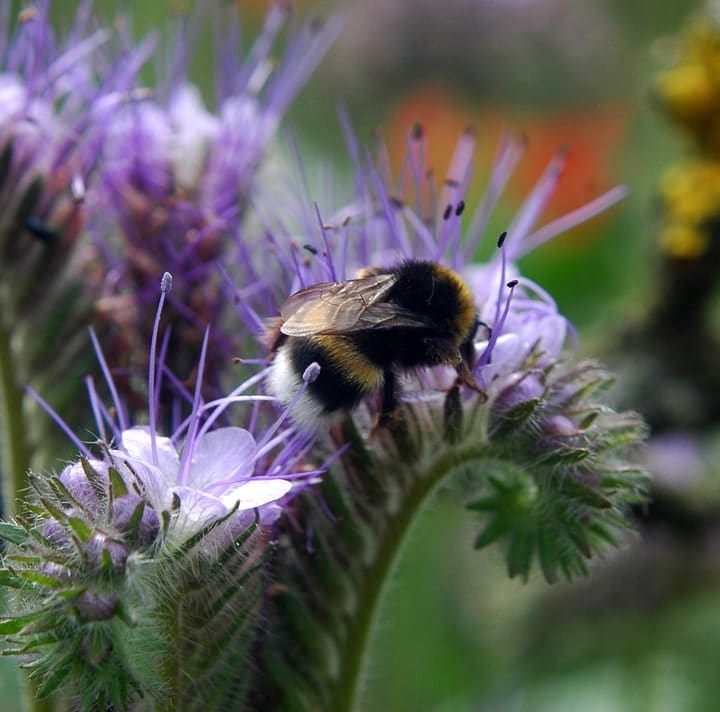
One of the easiest ways to make your garden bee-friendly is by creating diversity. Grow 10 or more of bee-loving plants that have different blooming seasons.
No matter the size of your garden, you can still do your bit to conserve bees. Create your bee-friendly garden in a container or a living wall.
Place a small water feature to give them a place to rest and hydrate themselves and you have a bee-friendly garden ready!
How to Design a Bee Garden
Imagine a colorful backyard abuzz with lots of busy bees. A lovely sight, no? Well, that could be your backyard, too, if you design it the right way.
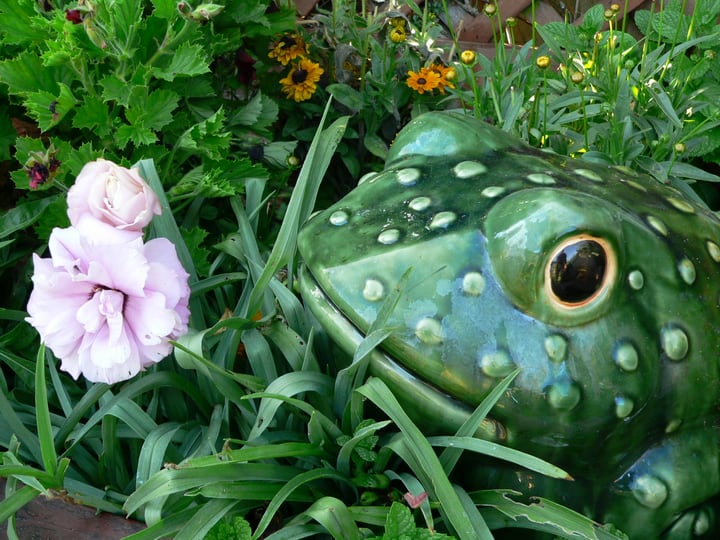
Grow bee-friendly plants, create variety, build tiny bee hotels, avoid chemical pesticides, and you’re good to go.
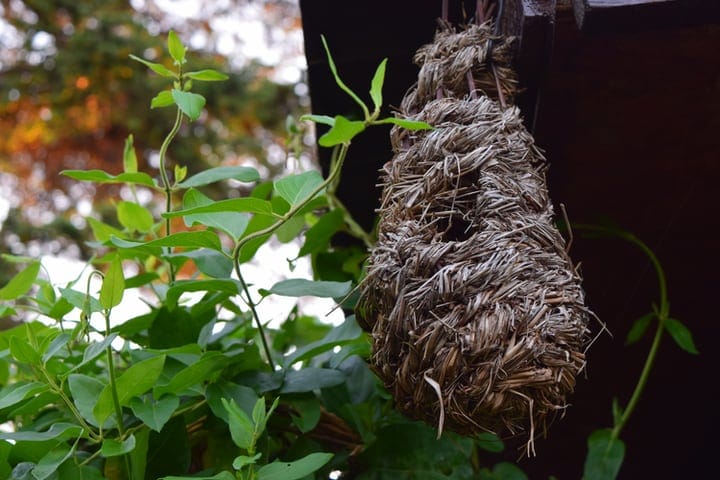
Below are some tips to keep in mind as you design your bee garden.
1. Select bee-friendly plants: Bees love bright colors and fragrance. So grow native wildflowers, berries, flowering herbs, and fragrant fruits and vegetables in your bee garden.
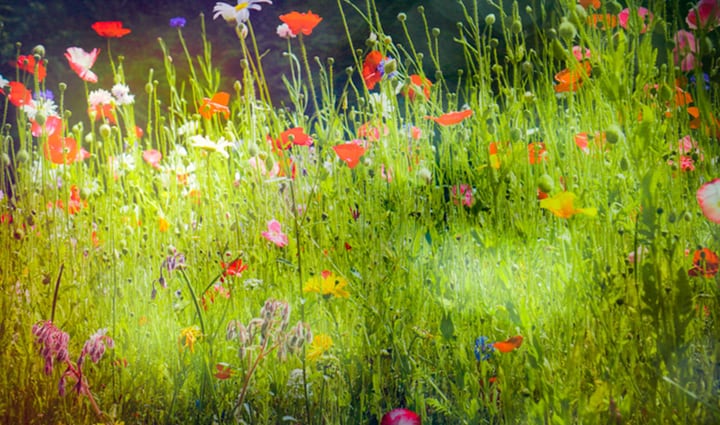
2. Do not use chemicals in your garden: Chemicals can prove to be toxic to bees. So don’t use pesticides or other chemicals in your bee garden. Opt instead for organic compost or beneficial insects like ladybugs or earthworms.
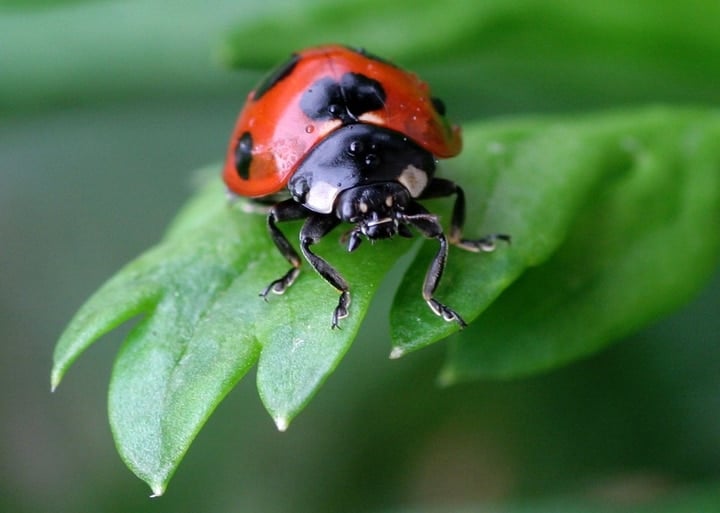
3. Provide freshwater: Install a water source for your tiny bees, especially if you live in an urban area.
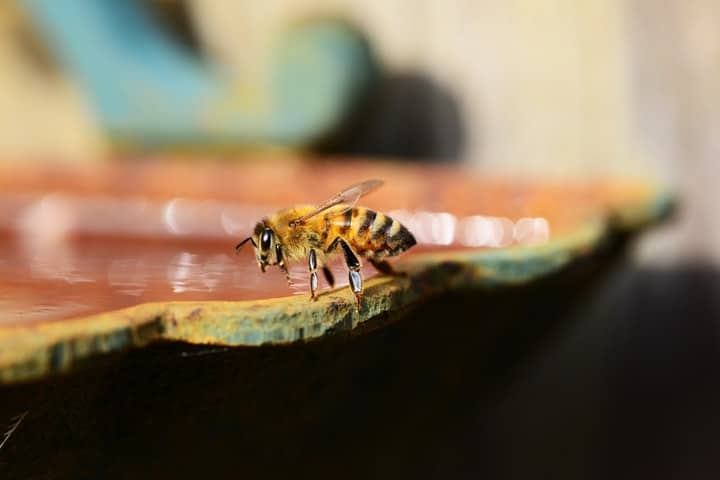
4. Choose plants with different blooming seasons: To make sure the bees in your area have a constant source of food throughout the year, grow plants that bloom in different seasons.
5. Make a bee hotel: A fun DIY project, making a tiny bee hotel can help solitary bees looking for a place to nest and lay their eggs.
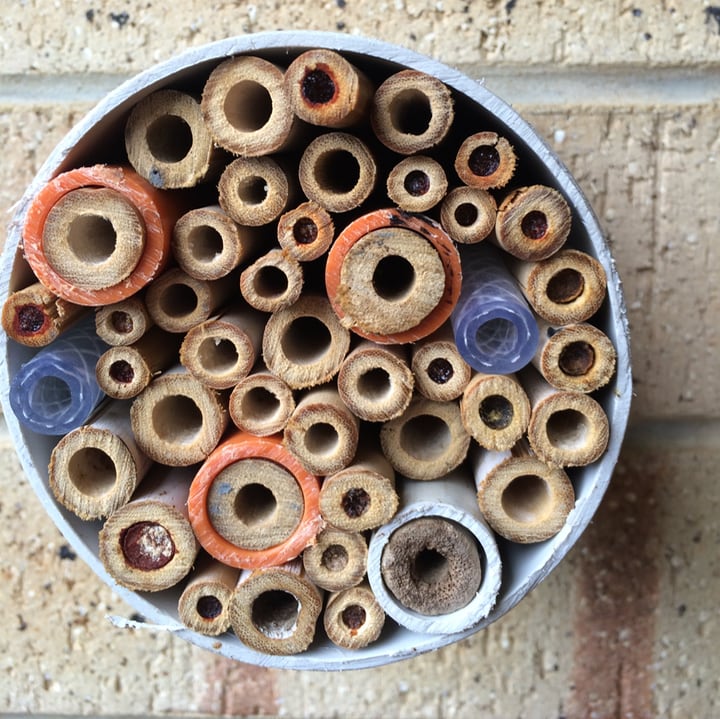
6. Leave a little mess: You can skip mowing and weeding your lawn for a while. Bees look for clovers and dandelions for pollen and nectar. Some warmth-loving bees even like to nest in quiet, wild corners.
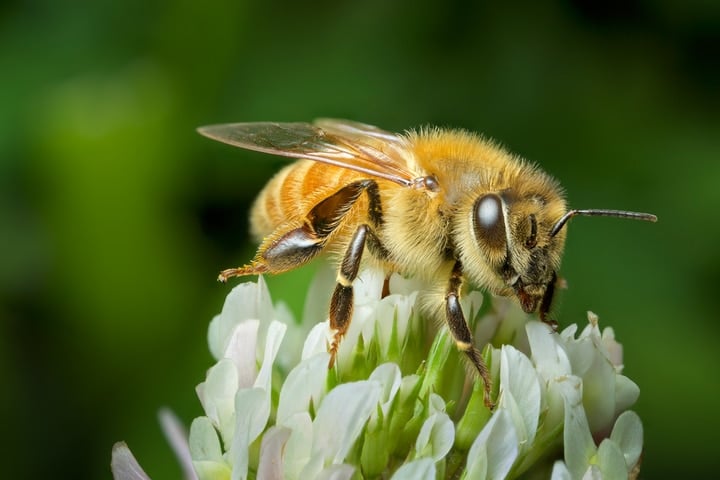
Best Bee Garden Plants
Make your bee garden both colorful and functional by planting flowering herbs, fruits, and vegetables in it. Plus, home-grown food will be a healthier, tastier, and even cheaper option for you.
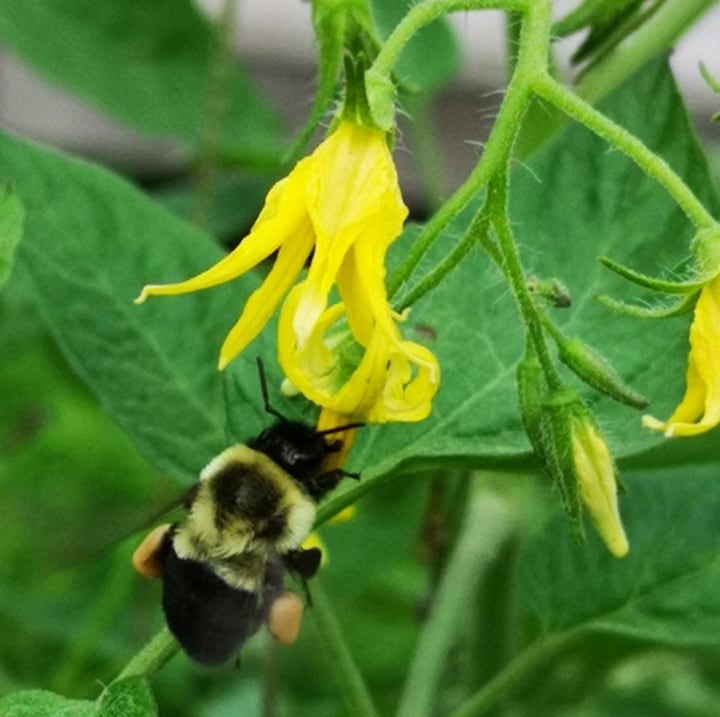
Here are some must-have plants for your bee garden:
- Mint
- Sage
- Thyme
- Oregano
- Tomato
- Strawberry
- Pumpkin
- Broccoli
- Beans
- Raspberry
Best Bee Garden Flowers
While selecting flowers for your bee garden, go for at least three different flowers with varied flowering seasons.
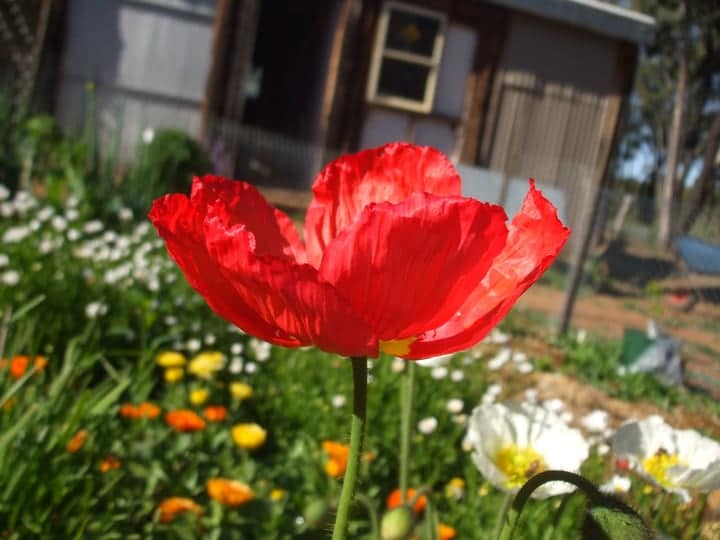
This way, your garden will bloom through as many seasons as possible and will provide food for bees all year round.
Here are some flowers you can grow in your garden:
How to Plant a Bee Garden
Ready to invite more bees to your garden? Plant a bee-friendly garden that will also help safeguard one of the earth’s treasures. Not to mention that a bee garden will add color and fragrance to your space all year.
Follow this easy step-by-step guide to plant a garden that bees will love to frequent.
Creating your Bee Garden has never been this easy! Follow our simple step-by-step guide on how to create your DIY bee garden and have it set-up and running in a few days!
Step 1 – Choose Your Location
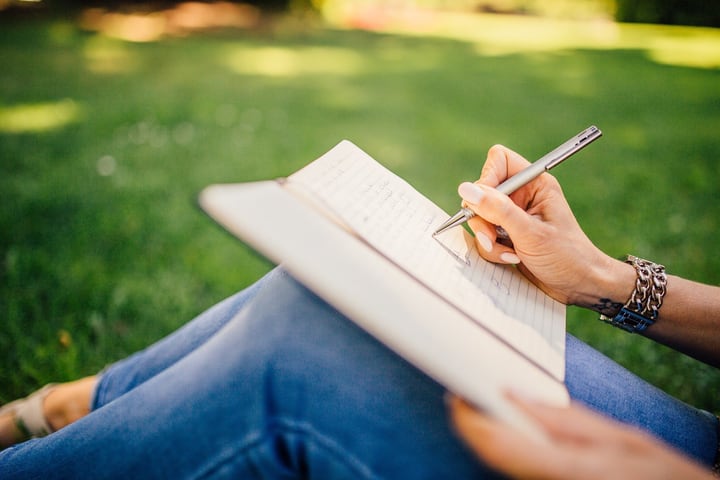
Before getting started on a bee garden, find an ideal spot for it. Make sure the area receives plenty of sunlight and is far from livestock.
Draw a rough sketch to measure your space, see how many plants you’ll need to purchase, how much soil is required, etc.
Step 2 – Select Your Plants and Seeds
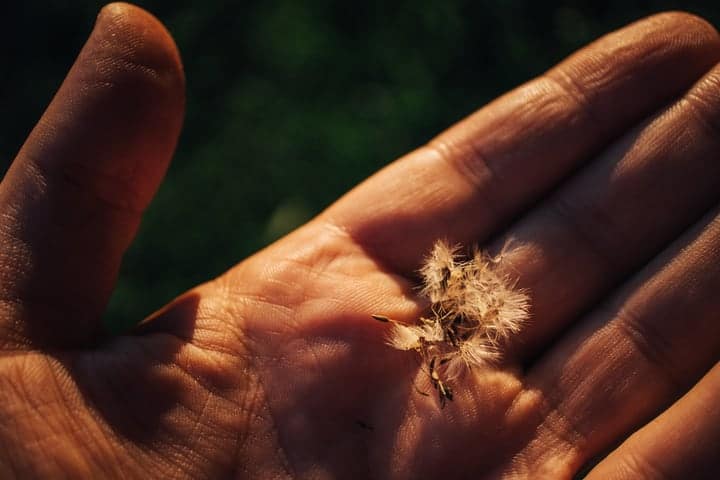
Make sure that the plants and seeds you choose provide enough food for the bees. In simpler words, grow those plants that make plenty of nectar and pollen.
Tip: Bees are attracted to colors and smells. So plant bright and fragrant flowers in your garden.
Step 3 – Bring in the Soil
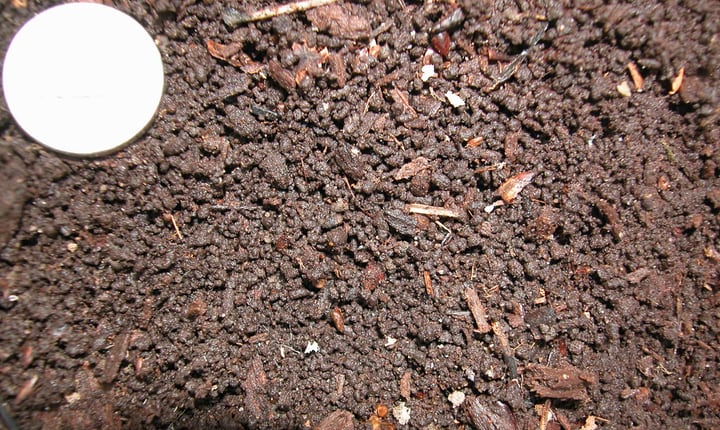
The soil you use in your bee garden should be soft and free of rocks. Do away with toxic pesticides and chemicals. Instead, use organic and bee-friendly methods to combat pests and weeds.
Step 4 – Planting Time
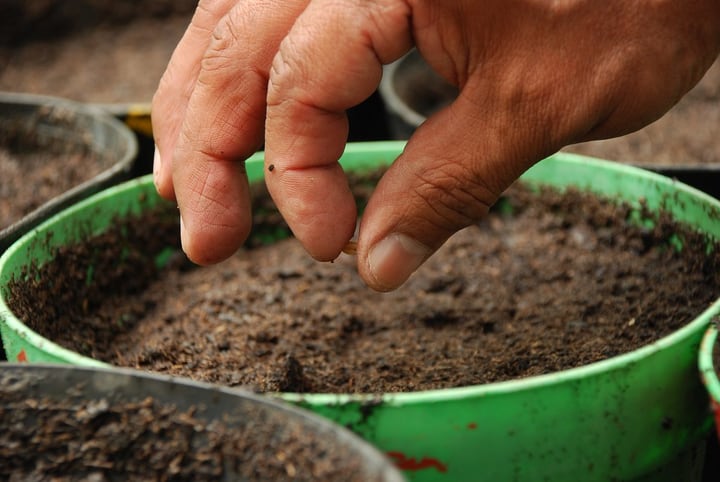
Pack in as many plants as you possibly can in your garden. That’s because bees are attracted to dense gardens. Grow an array of flowering annuals and perennials.
Tip: Group plants of similar species and color together to attract more bees.
Step 5 – Add a Water Feature
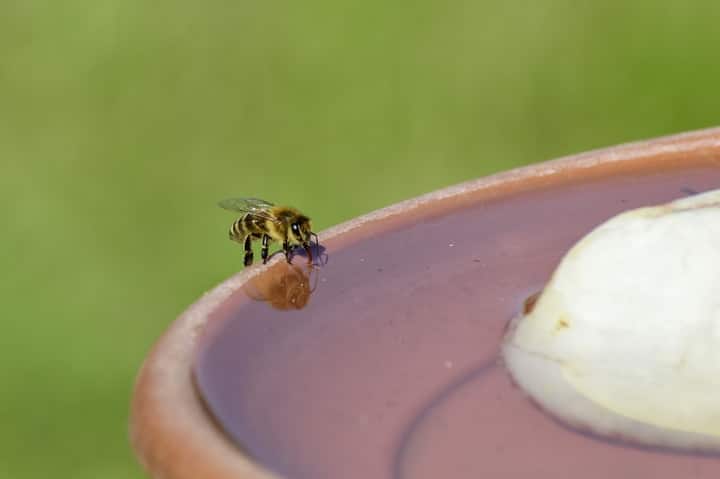
Bees will need fresh water to rejuvenate themselves after a busy day. So, create a small water feature like a shallow birdbath or pot. You can also use a small container and line it with pebbles as an alternative.
Tip: During summers, your water feature will dry up quickly. So don’t forget to refill it every day.
Bee Garden Ideas for Inspiration
Want to bring in these honey-making heroes to your garden but not sure where and how to begin? Take inspiration from these awesome bee garden ideas we’ve compiled for you.
1. Purple Garden for Bees
Here’s a surefire way to entice bees to your garden—grow purple flowers. But why purple? Well, according to research, flowers on the purple and blue end of the color spectrum are easily perceived by bees.
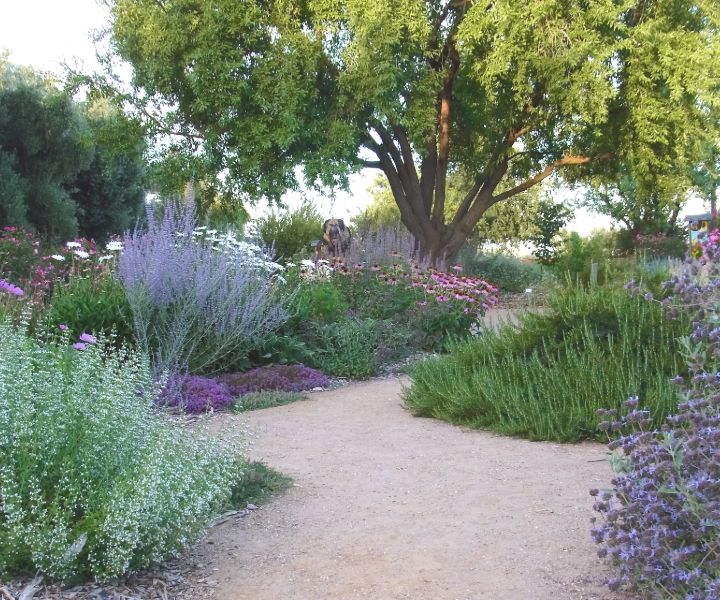
Bees are therefore more attracted to purple flowering varieties like catnip, lavender, starflower, corcus, or heliotrope.
2. Honeycomb Furniture
Take inspiration from UK’s Copella Bee Garden for your own space. The garden is designed to attract honeybees and it features a large sculpture resembling a natural beehive.
Get a honeycomb-inspired table set to complete the look. Add a patio umbrella and use the space to unwind amidst nature.
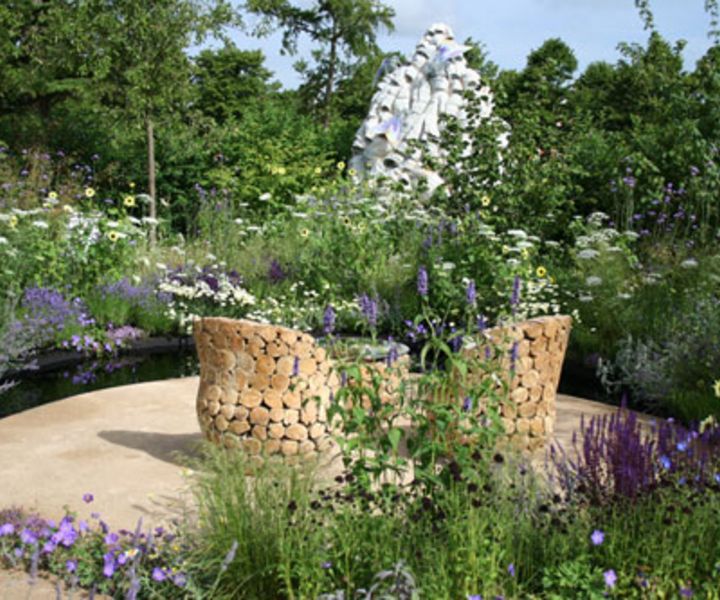
Tip: You can grow hyssop, oreganum, lavender, and other herbaceous perennials to fill your garden with color and fragrance.
3. Color Block Garden for Bees
Color-blocked gardens are pretty to look at. But they’re also relevant for bees. How? Well, flowers grown in large blocks of color make it easier for bees to locate the flowers as they’re looking for food.
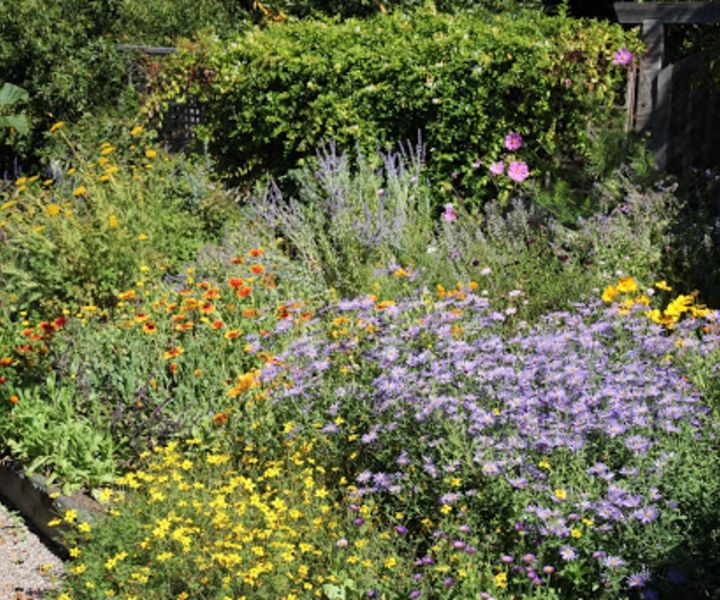
Create separate blocks of California lilac, orange poppies, and yellow cosmos in your garden instead of growing a few of each plant here and there.
4. Bee Bath Garden
You’ve grown bright and fragrant flowers to attract bees to your garden, but still no luck? Know that bees need more than just nectar.
They need water to drink, bathe, and cool themselves. So, create a water feature for them in your garden.
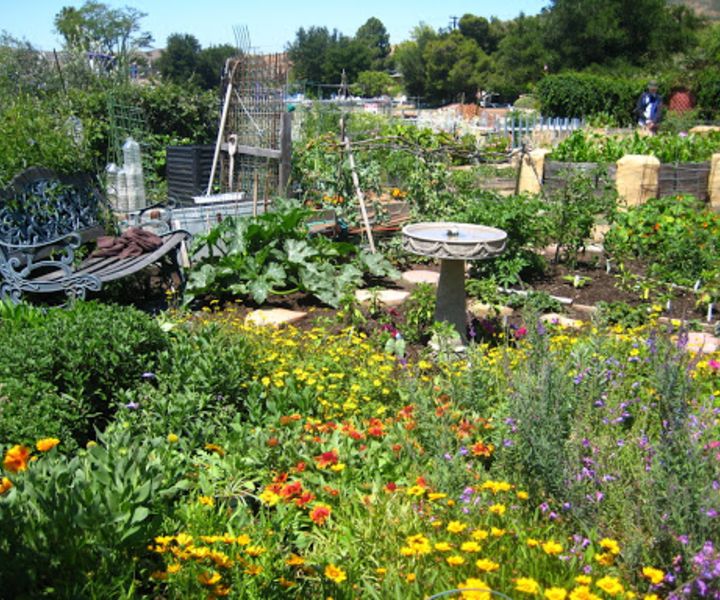
Fill a shallow dish with water to create a bee bath. You can also use a birdbath and add to it pebbles or twigs on which the bees can land whilst drinking.
Tip: Good news for some—bees love a little messy space. So keep that lawnmower aside and allow certain corners of your garden to go wild.
5. Mini Bee Meadow
With the ever-shrinking forest cover, it may become difficult for bees to look for food. So why not turn your garden space into a wildflower meadow?
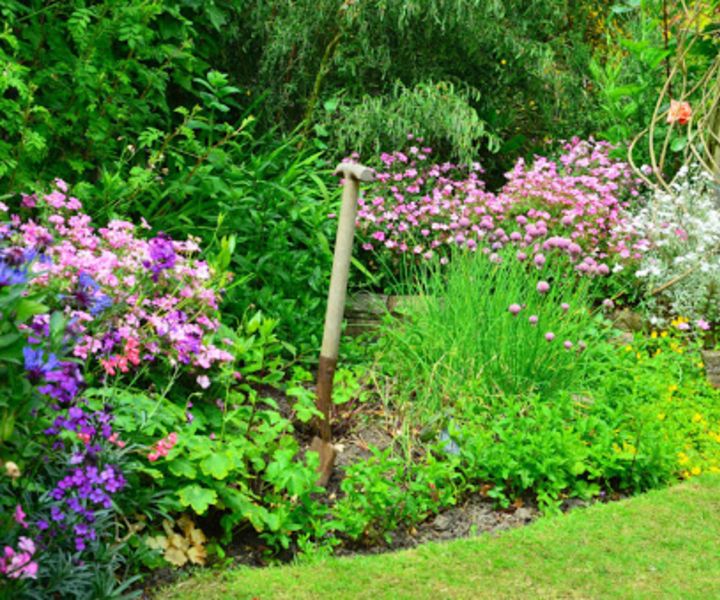
Done right, wildflower meadows are easy to make and need very little maintenance.
Prepare a seed mix consisting of cowslip, lady’s bedstraw, meadow buttercup, yarrow, daisy, etc. and your garden is sure to buzz with life.
Tip: Bees have a preference for native flowers. So make sure you plant wildflowers that are native to your area instead of the popular hybrid varieties.
6. Yarrow Bee Garden
Common yarrow, also known as achillea millefolium, is what you need in your garden if you want to attract tons of bees. The plant has flat-topped flower clusters that are ideal for bees to land on.
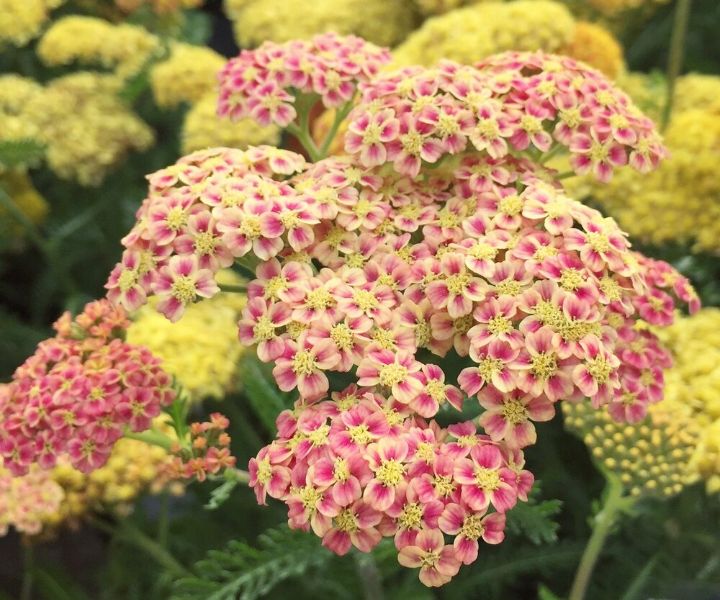
From deep pink and red to purple and cream, yarrows come in an array of colors. What’s more, they are super easy to grow and can add a spotlight to your garden.
Tip: You can also use yarrows for cutting and drying at the end of the season. Or collect the stalks to make pretty bouquets.
7. Sneezeweeds for Bees
Bring a vibrant splash of gold, orange, yellow, and copper to your bee garden with sneezeweeds. Also known as helenium, the flowers of this plant bloom from mid summer to late autumn.
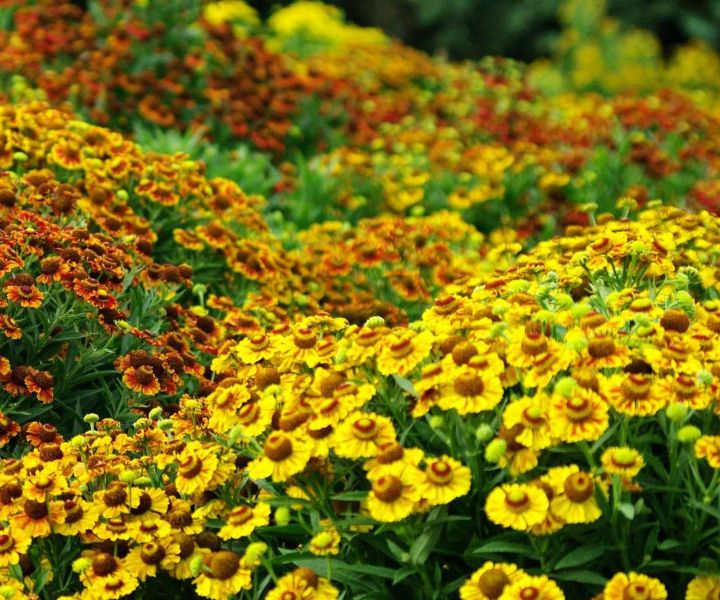
What’s more, the plant is low-maintenance and largely pest-free. It’s sure to attract honey bees, bumblebees, and plenty of solitary bees to your space.
8. Pollinator Bee Garden
Turn your space into a haven for bees with a pollinator garden. This garden features a raised garden bed that produces flowers from spring to fall.
You can make honeycomb-inspired hexagonal containers and place them end-to-end to save space.
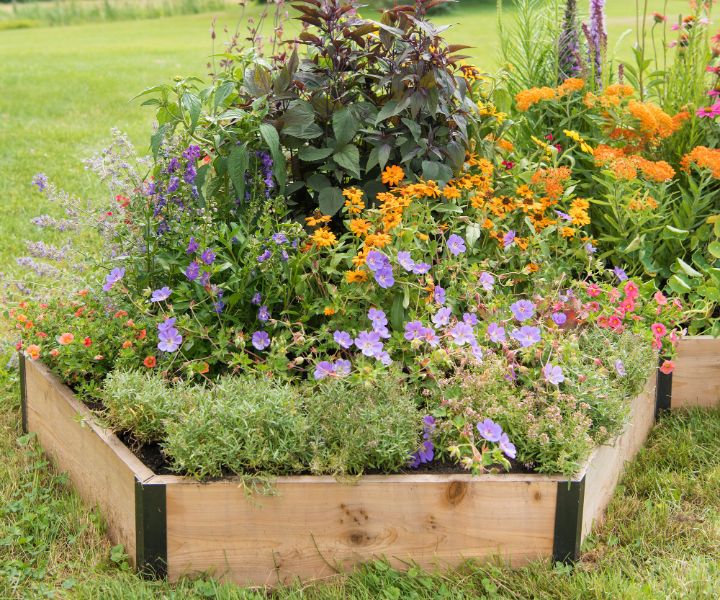
Fill them with potting soil and grow three to five pollinator-friendly perennials in groups to make it easier for bees to gather their food.
Tip: Grow plants with single flower tops, like daisies and helenium, in your pollinator garden.
Double-headed flowers look attractive but produce a lesser quantity of nectar and also make it more difficult for bees to access pollen.
9. Bee-utiful Oasis
Make a continuously flowering garden that bees will frequent throughout the year. How?
Grow plants that have different blooming seasons. You can also grow plants with different flower shapes—from tubular to flat—for bees with different tongue sizes.
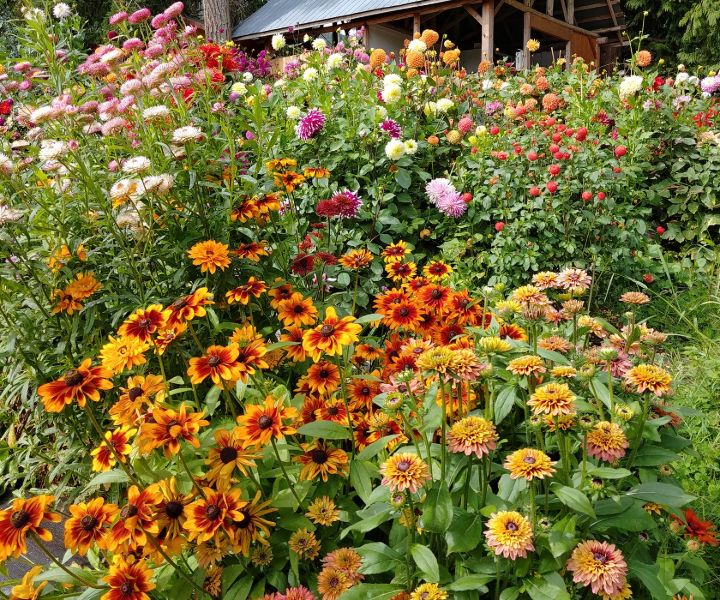
Early spring and late autumn flowering plants are ideal for your floral oasis. This way, early foragers or bees storing food before hunkering down for the winter will have plenty for their lazy seasons.
10. Bee Skep Garden
You can become a beekeeper of sorts by simply introducing a bee skep to your garden. Skeps are domed baskets used to house beehives.
They can help a colony of bees looking for a dry and clean place to build a comb.
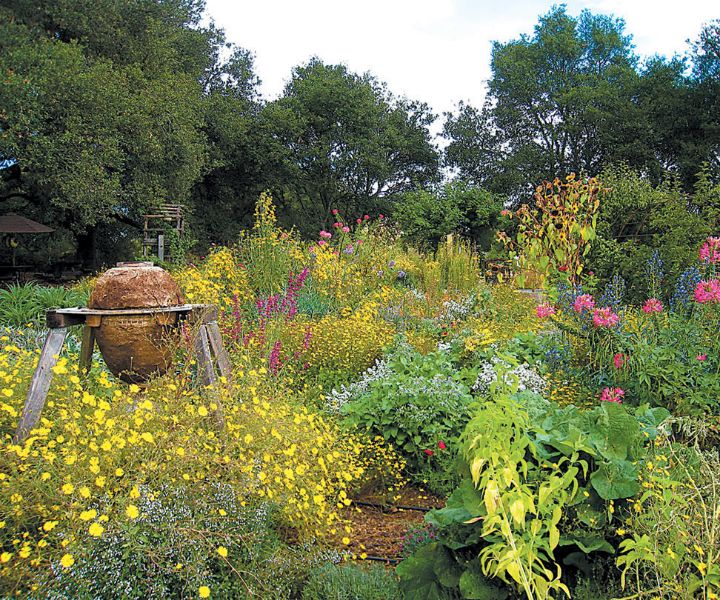
Beekeeping will help conserve bees in your area, increase pollination, and even earn you some money on the side. Plus, a bee skep is sure to add a spotlight to your garden.
11. DIY Pallet Bee Garden
Create an eco-friendly garden for bees using old and useless wooden pallets. Palettes are cheap, biodegradable, and can easily be repurposed to make an attractive bee garden in your space.
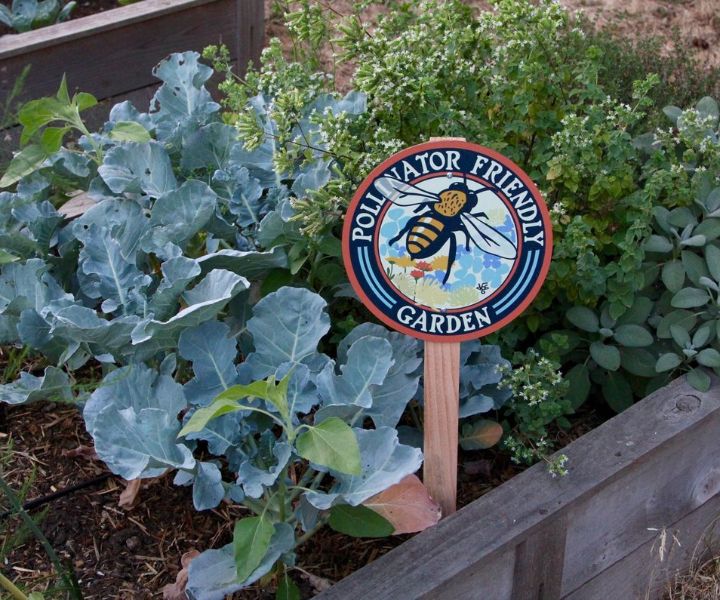
You can simply fill the palettes with compost and grow everything from plants to vegetables and flowering herbs in them.
Idea: Paint an eye-catching wooden signboard for your palette garden, as in the image below.
12. Pink Cosmos Bee Garden
If you want to create a show-stopper bee garden, plant pink cosmos in your flower beds. The larger the area, the better. Cosmos are super easy to care for and grow from spring to late autumn.
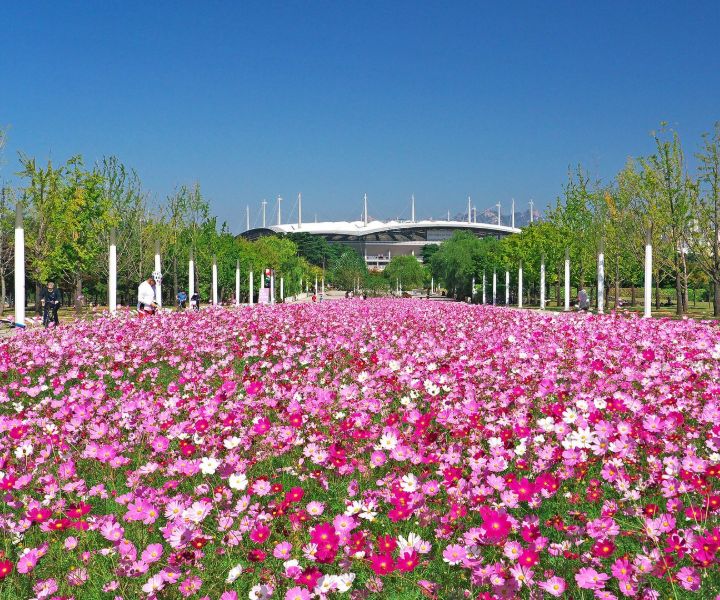
The single-petal flowers provide easy access to bees looking for nectar and pollen. And are also easy to perch on.
Good to know: Cosmos are self-sowing plants. If you allow them to die naturally, their seeds will germinate all by themselves. So you can save time, energy, and even money in next year’s planting.
13. Bee Planters for Bee Gardens
Your bee garden is incomplete without fancy planters featuring bees. You can choose from metal, plastic, ceramic, or clay planters available online.
But if you’re itching to try your hand at art, you can also paint colorful bees in your containers.
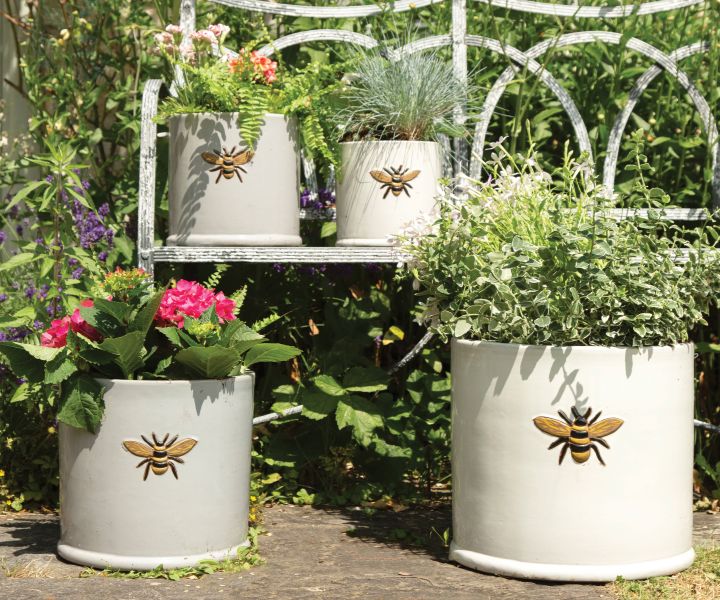
These containers can be a great addition to your space. Plus, with bee-friendly plants in them, they will attract tons of bees.
Tip: For a jazzy garden decor, bring in planters of different sizes and arrange them in one corner of your garden.
14. Mini Bee Garden
Do you want to get started on your own bee garden but are short on space? Don’t worry. You can grow space-wise flowers like goldsturms in your small garden patch.
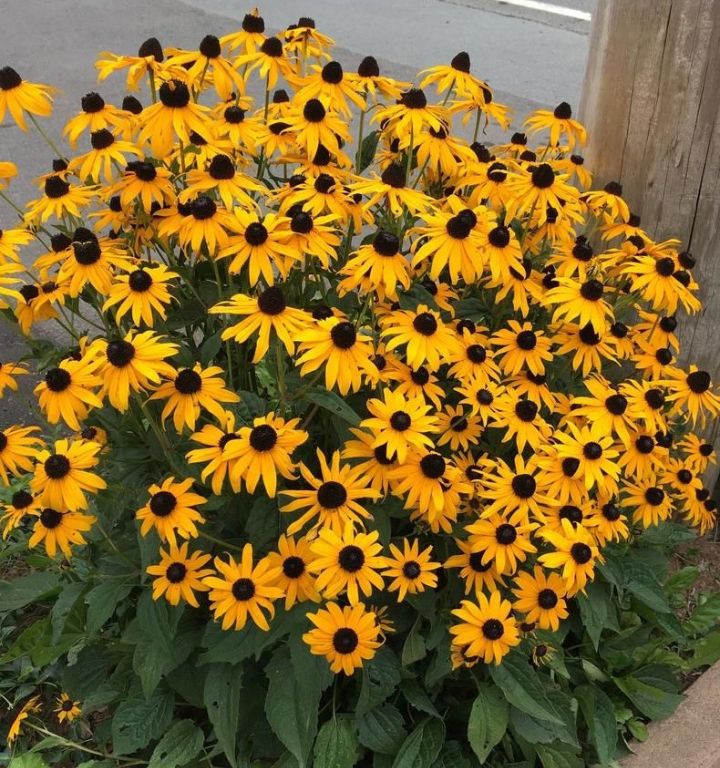
The plant makes abundant blooms in summers. They are bright and cheery and can add a spotlight to your space. Plus, they draw in bumblebees, native bees, and other pollinators.
15. Garden Bee Hotel
Not all bees live in large colonies. Some, like the mason bees, carder bees, and leafcutter bees, are solitary. They search for nesting sites in small holes in the ground, hollow stems, or walls.
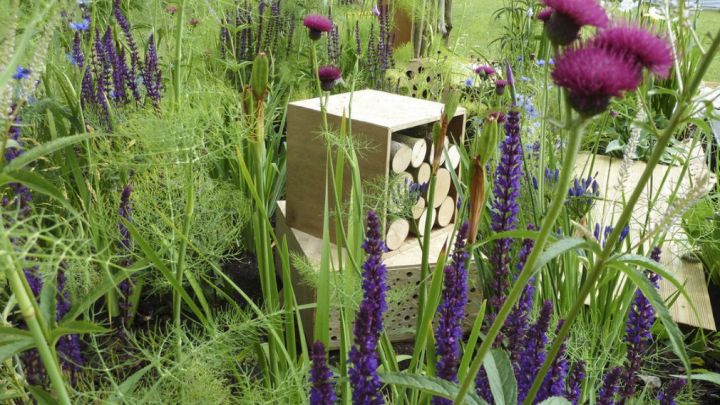
So how about you make a tiny hotel for them in your garden? Use an old plastic or wooden container and fill it with plenty of hollow stems of reed or bamboo.
Place it in the middle of your flower beds. Your bee hotel is ready!
Tip: Make sure you keep your bee hotel in full sun at least a meter off the ground.
16. Varied Bee Garden
Did you know that there are over 16,000 species of bees in the world? Each species has a different pollen and nectar preference, tongue size, and habitat. So it’s a good idea to introduce variety in your bee garden.
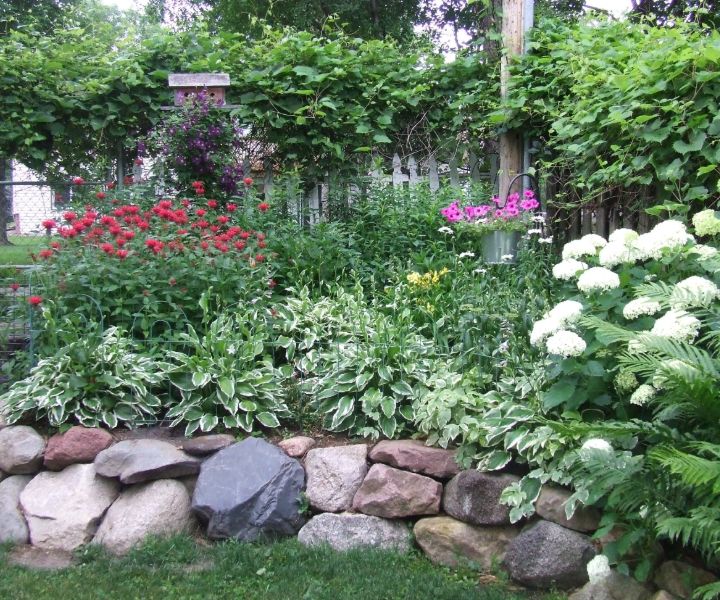
Grow flowers of different sizes, colors, and shapes. It will not only make your garden look more attractive but invite varied species of bees, too.
Idea: Create a raised flower bed using rocks and plant clematis, bee balm, asters, cosmos, etc. in separate blocks.
17. Bee Balm Garden
Bee balm is a bee magnet. Why, you may wonder. Because the plant makes eye-catching red, purple, pink, or white blooms. And, it has fragrant foliage.
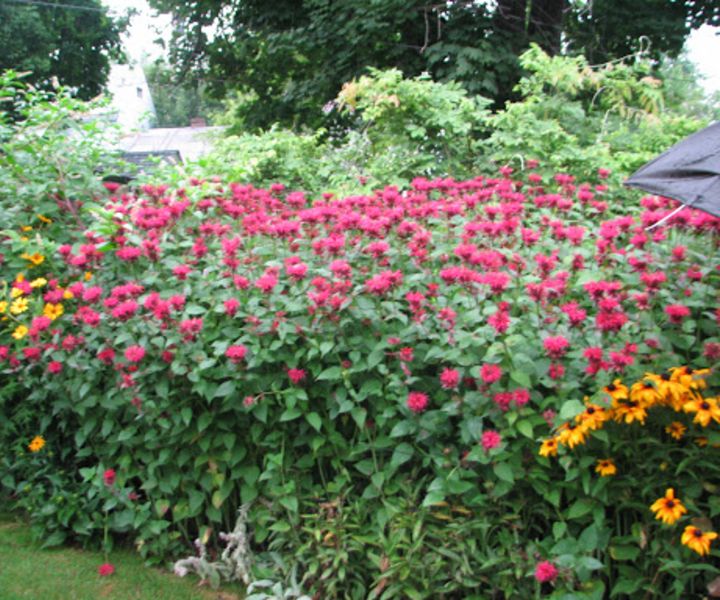
You can start growing bee balm in spring or early autumn to add a touch of old-fashioned beauty to your garden.
Make sure you plant it in close clusters instead of spreading it out. Your bee balm garden will draw lots of bees.
18. Bee Vegetable Garden
Good news! You can make your bee garden both attractive and functional at the same time. Start growing flowering fruits and vegetables in it.
No matter how small your garden patch is, you can have lots of bees buzzing about it to collect pollen and nectar.
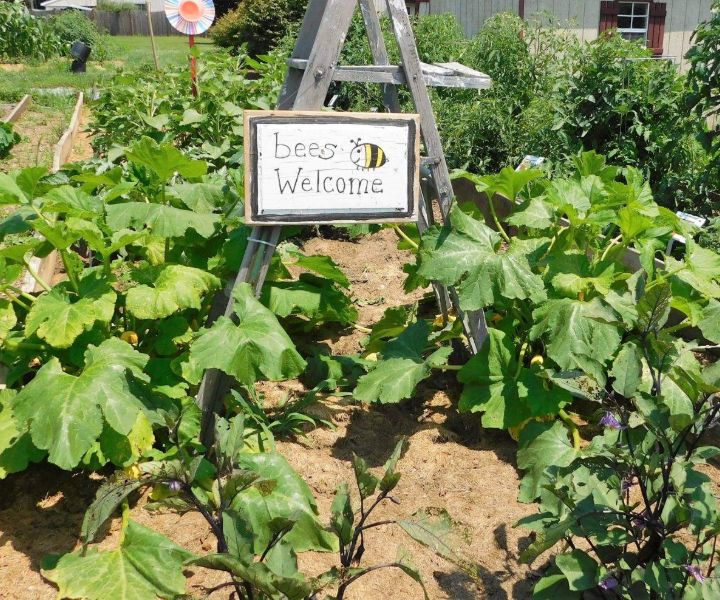
This, in turn, will pollinate your fruits and vegetables. And that means greater yield! Grow flowering fruits and vegetables like tomatoes, strawberries, pumpkins, runner beans, and raspberry bushes.
Tip: Avoid using pesticides and insecticides in your vegetable garden. If the chemicals can kill the insects, they can kill the bees, too.
19. Autumn Garden for Bees
In autumn, bees work overtime to forage for food and survive winter hibernation. So give your honey bees lots of pollen and nectar to store.
Grow late-blooming plants like broccoli, basil, calendula, lemon balm, and aster.
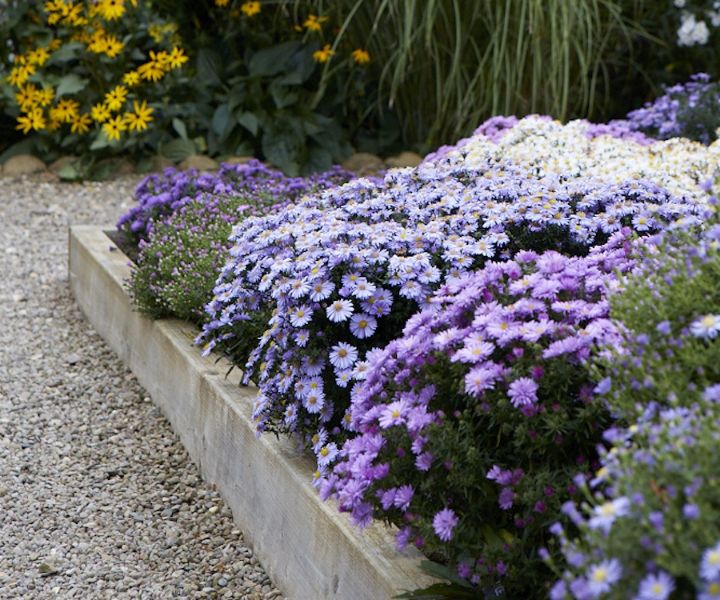
Many believe that asters are the autumn power plant for bees. The small purple flowers are attractive to look at and produce lots of pollen and nectar.
They can make a nice contrast to the autumn shades in your garden.
20. Blue Fortune Garden for Bees
This bee-friendly plant is a must-have in your garden. It is hardy, pretty to look at, and a nonstop bloomer. The plant features long, powder-blue flower spikes that attract bees and other pollinators.
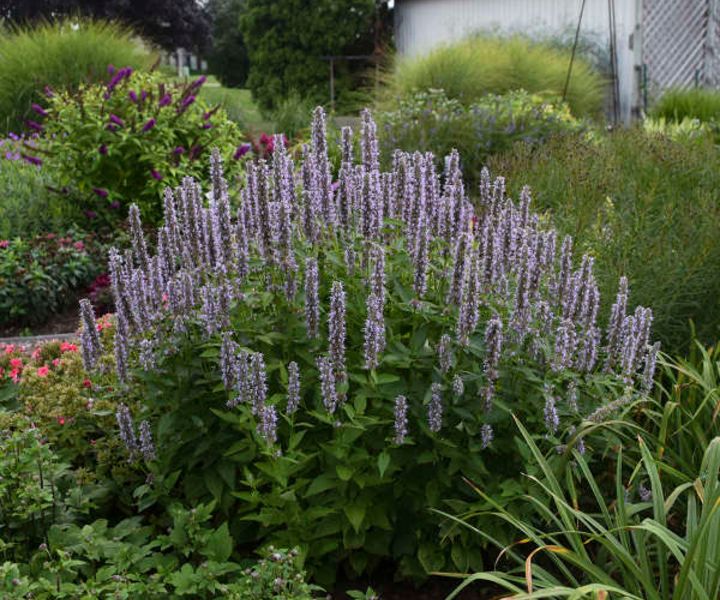
It’s a rewarding perennial to grow. Plus, it develops a slight minty scent as it matures. How lovely!
21. Shady Bee Garden
Bees love to buzz around flowers in full sun. But that doesn’t mean they will avoid the shady patches in your garden. You can simply grow a few shade-tolerant plants in those patches that bees are attracted to.
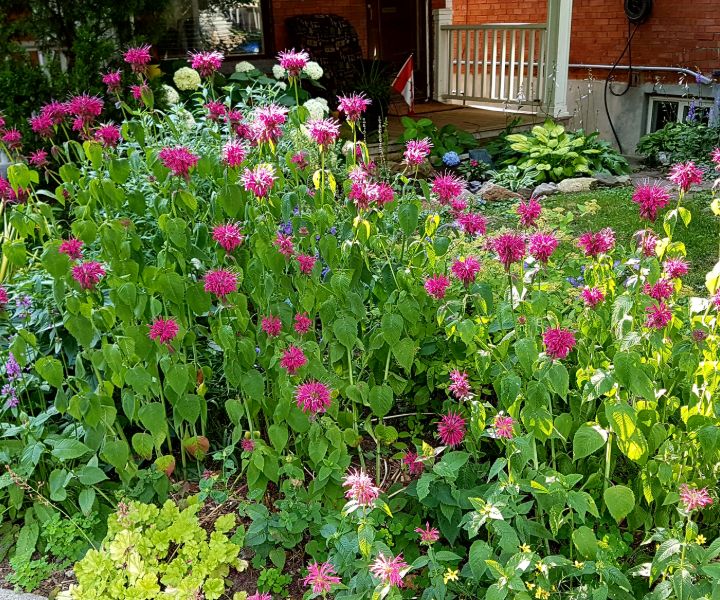
Bee Garden Kits and Seeds
Getting specially curated kits and seeds for your bee garden can be the first step towards a big change. They are the perfect solution for even apartment-dwellers lacking a garden space.
Bee Garden Seeds
Get a pack of easy-to-grow mix of seeds from your local nursery, or buy them online. Look for a seed mix containing basil, beans, dandelion, catnip, lavender, cosmos, daisy, poppy, and other flowers.
Bee Hotel
Apart from seeds, you can also create a safe home for solitary bees with a bee hotel. You’ll find plenty of options available online. Make sure to mount it in a sheltered location to cover it from wind and rain.
Bee Bath
To give the final touch to your bee garden, get a tiny bee bath that will not only make your space look great, but also cool bees in the hot summer days.
Bee Garden Frequently Asked Questions
Bee-fore you start planting your bee garden, quickly read through these FAQs. You may find some of the answers useful.
Is it good to have bees in your garden?
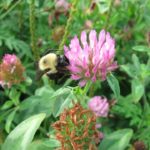
Having bees in your garden is great. Bees are masters of pollinators. Without them, you wouldn’t have half as many flowers, fruits, and veggies growing in your garden.
Besides, if the bees have made a hive in your space, you can enjoy fresh honey, too.
How can I encourage bees into my garden?
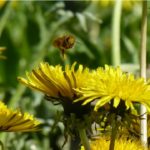
You can start by planting bee-friendly flowers like daisies, lavender, or cosmos in your garden. Keep your garden pesticide-free and remember to keep a source of water for them. Bees are sure to visit your garden.
Why are there no bees in my garden?
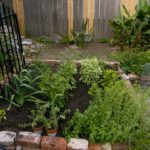
There could be a number of reasons why your garden is not being frequented by bees. Maybe you’re using chemical fertilizers or growing plants that don’t produce enough nectar and pollen.
Bees also look for patches of flowers instead of a few flowers here and there. So if your garden is lacking that, you may want to shuffle things a bit. Here’s how to design a bee garden the right way.
What plants are best for attracting bees?
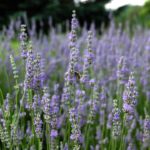
Bees are attracted to pollen and nectar-rich plants like lavender, daisy, etc. You can grow colorful and fragrant plants to entice them. Read our section on the best plants and flowers to attract bees to learn more.
Before You Buzz Off…
If you’re scared of bees, remember that they’re more focused on finding flowers than on annoying you.
So, you can safely create a colorful, ever-changing display in your garden to attract bees. Your bee garden is a small step to make a big difference in the world.
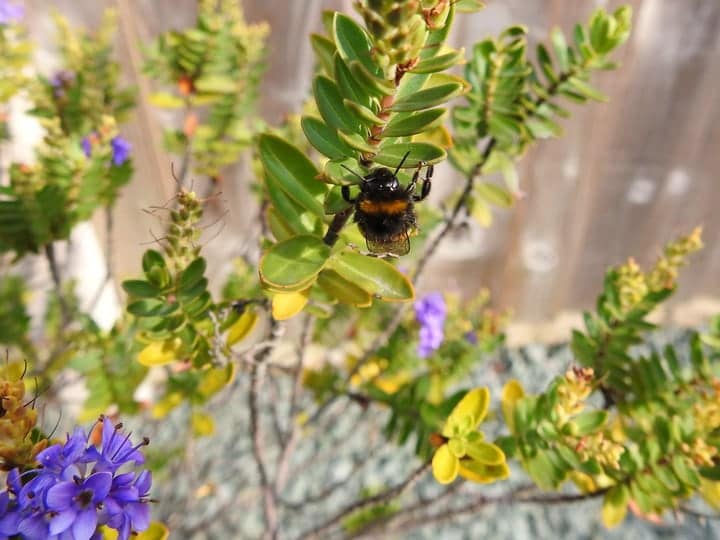
Creating a bee garden can be an enjoyable and rewarding process in itself. It’s not only about the bees but also about your own enjoyment.
Don’t forget to let us know which bee garden idea you liked the best. And if you’ve got more questions to ask, the comment section is yours.
See you next post!

Leave a Reply